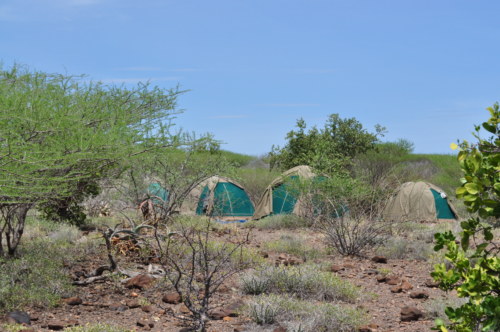
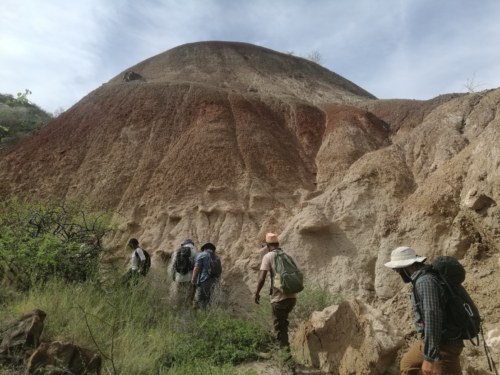
A trip to Buluk on Monday morning marked the start of our last week studying Vertebrate Paleontology. The middle Miocene site of Buluk sits on basaltic sediments dated to about 16mya. The faunal interchange during the early Miocene, as a result of a terrestrial connection between Eurasia and Africa, was the main factor that brought about mammalian diversity. Our first fossil hunting expedition was at Dead Elephant Valley. The bones here are deposited in ancient channels (white sediments), with overlying red soils that signify ancient floodplains. Fossil fauna present at the site includes elephants, rhinos, and crocodiles. Our afternoon expedition ended with a walk through a petrified forest.
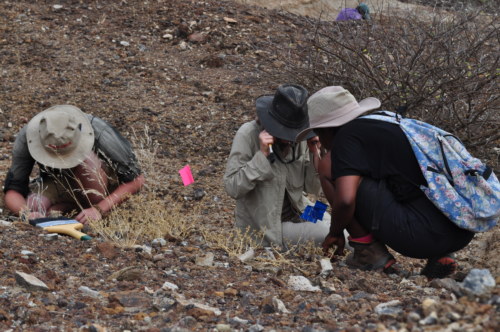
Clara and Dr. Miller take a closer look at the fossils at Dead Elephant Valley. Photo credit: Wambui Mbogo.
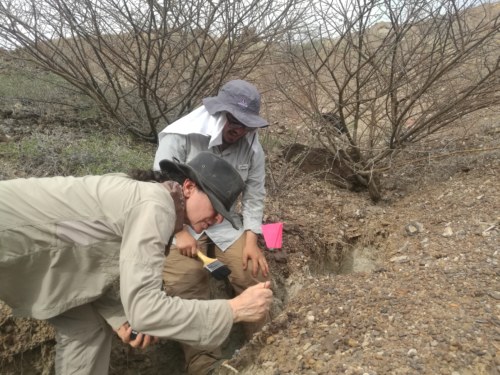
Dr. Miller examines a tooth found by Jared. Photo credit: Medina Lubisia.
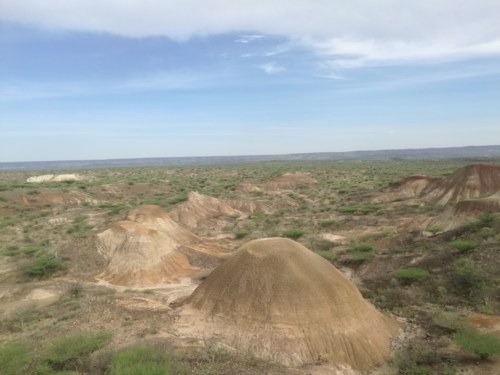
Exposures at Buluk. Photo credit: Medina Lubisia.
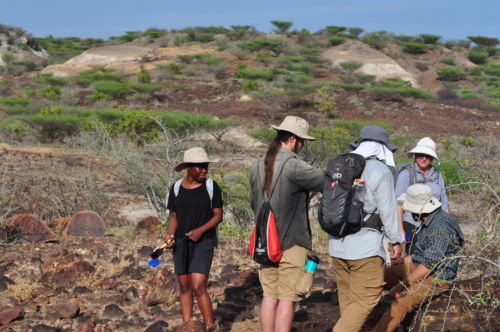
Students discussing the petrified forest. Photo credit: Wambui Mbogo.
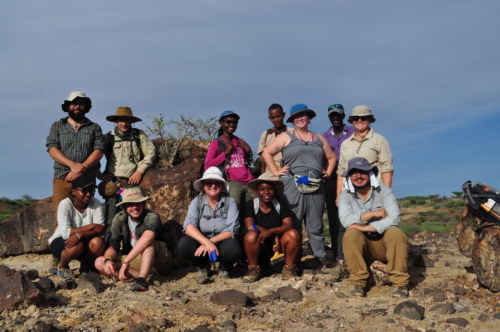
A group photo next to one of the gigantic pieces of petrified wood. Interestingly, it has a tree growing inside! Photo credit: Ellen Miller.
The following days were spent at Shadracks’ and Big Sieve sites, respectively. Students crawled on the hills looking for fossils. As emphasized by Dr. Miller, hill crawling gives one a better view of the ground, and the ability to identify small fossils like primate teeth. Students collected fossils representing many of the mammalian orders, such as Primates, Tragulids, Perissodactyls, Proboscideans, and Carnivores.
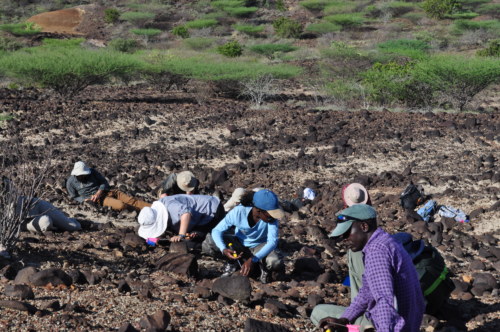
Hill crawling at Shadracks. Photo credit: Wambui Mbogo.
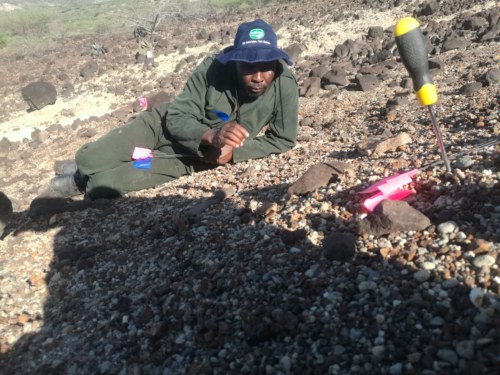
Our driver, Mwang’ombe, joined us in the hill crawl. Photo credit: Medina Lubisia.
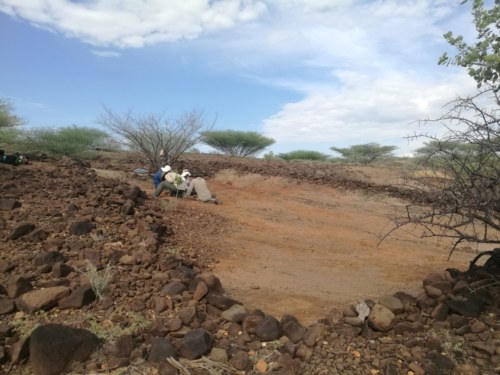
Students at the Big Sieve. Photo credit: Medina Lubisia.
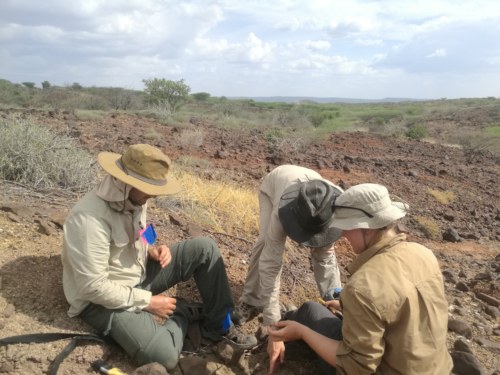
Dr. Miller examines fossils found by Becca and Zak. Photo credit: Medina Lubisia.
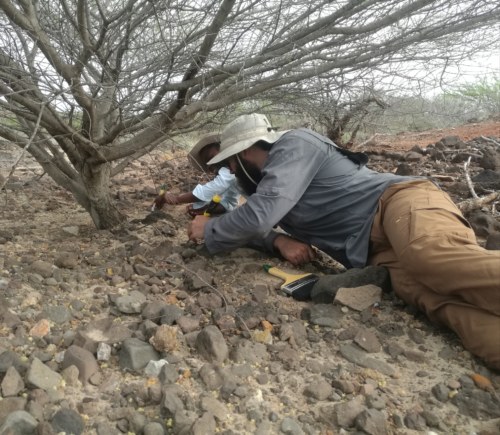
The acacia tree did not stop Joe and Clara from their crawl. Photo credit: Medina Lubisia.
The highlight of the trip was plastering fragile fossils. Under the guidance of Dr. Miller, Sale, Woto and their T.A., students successfully excavated the fossil humerus of a rhino and an elephant mandible using picks and brushes. Excavating fossils is a delicate process; one has to excavate around the edges fossils to isolate them from the matrix, and crumbling pieces are glued together to harden the fossil. Wet paper towels are used to cover the fossil to protect it from the plaster. Plaster coated strips are then placed on top and left to dry to form a jacket that holds the fossil together.
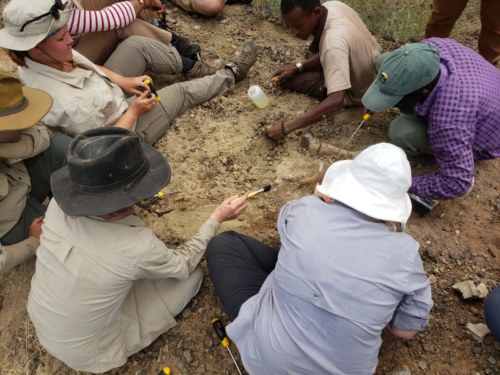
The excavation in process. Photo credit: Jared Schaffer.
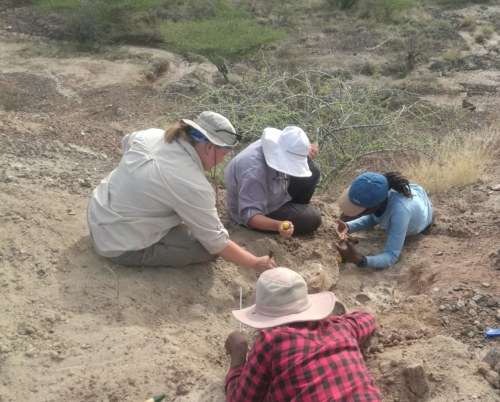
T.A. guiding students in excavating. Photo credit: Hillary Sale.
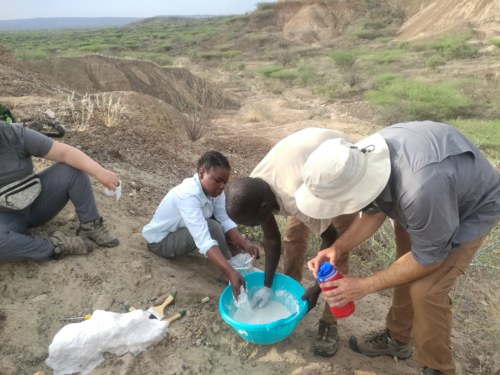
Joe and Clara helping Sale prepare the plaster. Photo credit: Medina Lubisia.
We returned to our Ileret campus on Thursday morning, where students had the chance to unwrap and analyze some of the fossils they collected from the field. Later on, they sat for their end-of-course exams, and are now ready for the next module.
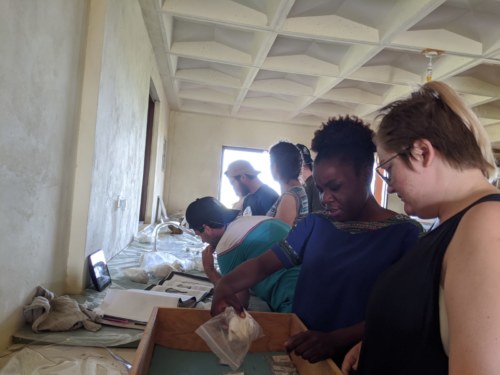
Amber and Clara confirming the field specimen numbers in the lab. Photo credit: Medina Lubisia.
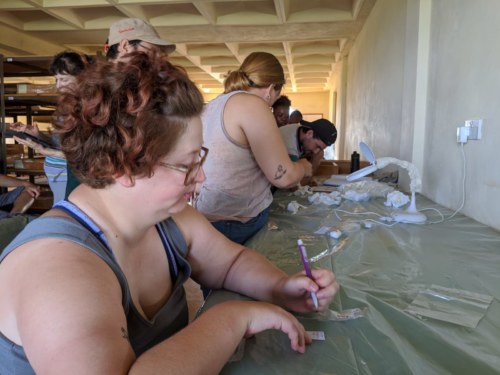
Emma writing information on her collection card. Photo credit: Medina Lubisia.
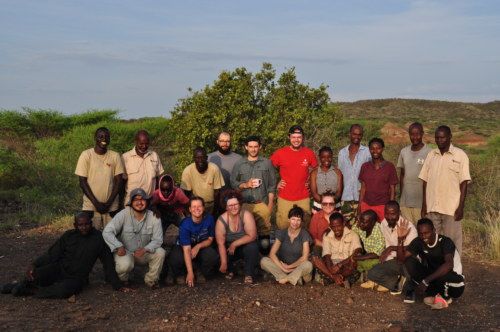
Team Buluk, 2020! Photo credit: Wambui Mbogo.





